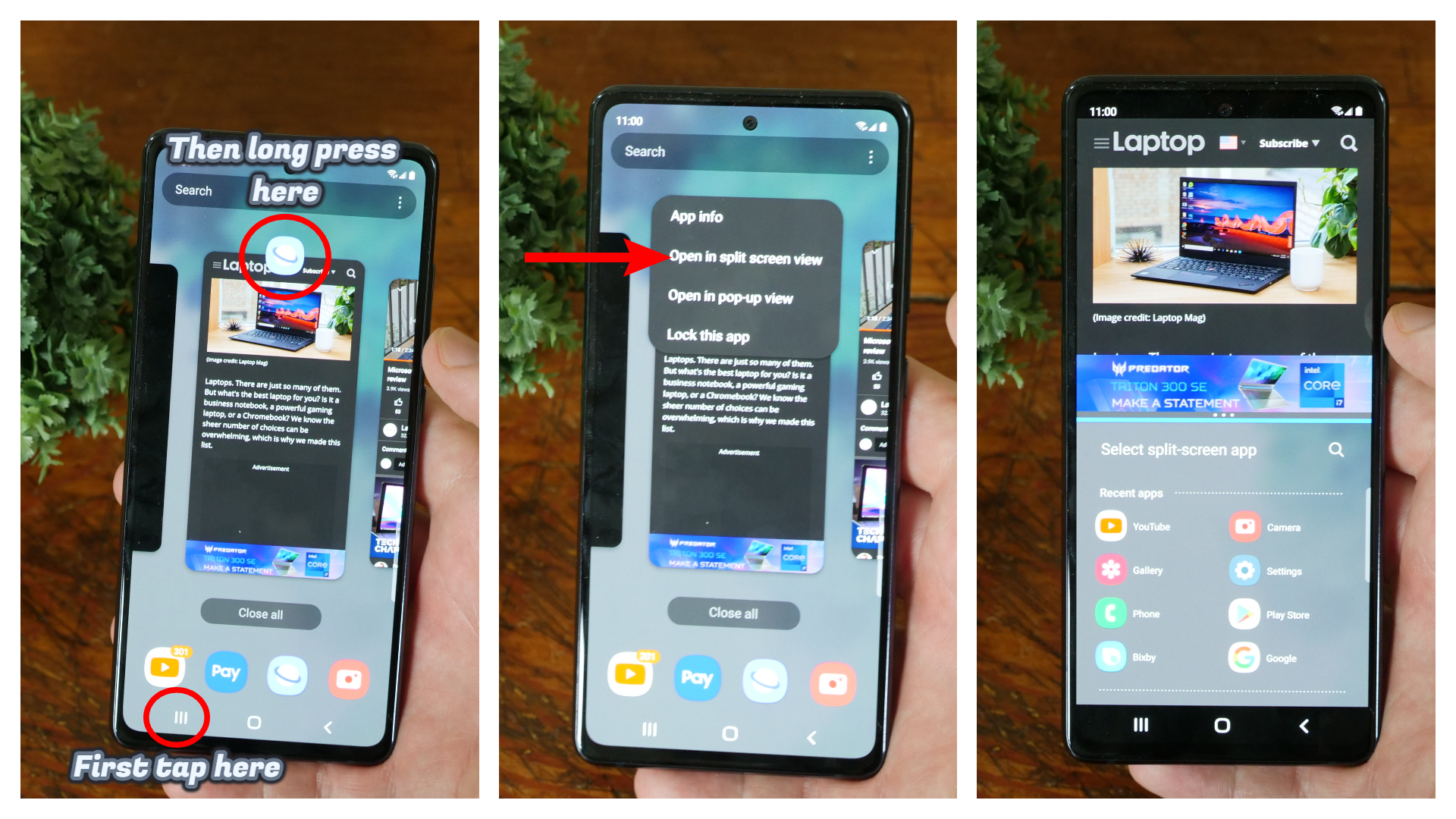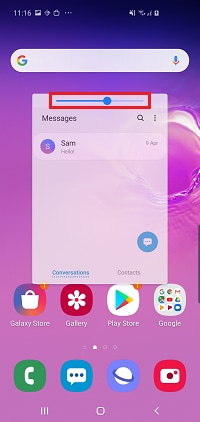
- Samsung split screen android#
- Samsung split screen pro#
- Samsung split screen software#
- Samsung split screen windows#
There you just need to click on the corresponding icon near one of the last running applications.

This window mode can also be started from the page of last running programs (swipe from the bottom of the screen up to the middle).
Samsung split screen windows#
If you are not interested in such a purely phone-tablet option of setting the split screen, you can use another option, which creates additional application windows on the example of computer applications. Simultaneous display of two applications on the screen Samsung Galaxy A34 5G: instruction #2 We hope that this option of setting up the two-window mode will help you.

Samsung split screen android#
But thanks to updates to the Android system, this has long been no longer the case. Many people are sure that this is impossible and it is necessary to choose one thing. A typical example is watching videos on YouTube and simultaneous correspondence with a loved one or a friend. Nevertheless, there are plenty of areas where the M7 does succeed, and it’s a good option if you need a versatile, good-looking 4K panel for everyday work and home use.Every modern cell phone user at least once noticed a desire to use several applications at once. These issues do mean that Samsung isn’t suitable for certain tasks or colour-sensitive workloads.

Office 365 is a key productivity feature but it’s too slow, and image quality is good – but not great. There are some notable connectivity omissions despite the ample features, and the Samsung has middling build quality and adjustability.
Samsung split screen software#
The Samsung looks great and is surprisingly affordable given the hardware and software on offer. The M7’s image quality and 4K resolution means it can take on lots of different workloads, and the bright, punchy panel is paired with loads of connectivity options and plenty of smart features. The M7 doesn’t have the quality or gamut ability to handle colour-sensitive workloads, but it does have lashings of vibrancy, reasonable accuracy and stonking contrast, which makes it ideal for tackling everyday, mainstream workloads where colour isn’t key – and it’s great for media after work, too. Conversely, though, the Philips does have poorer contrast. The Philips’ smaller diagonal size means it’s a little crisper than the Samsung (Philips offers a 157ppi density level Samsung only manages 138ppi) and it uses IPS technology, which means better colours than the M7. This makes no difference in work applications, when browsing the web, and watching media, but it’s not ideal if you want to play games on this display too, and you’ll want a higher refresh rate if you want smooth animation in certain work tasks too.

The peak brightness and the DCI-P3 gamut coverage level of 73.9% means it’s not good enough to handle HDR media or workloads either.Īlso bear in mind that the M7 has an 8ms response time, a 60Hz refresh rate and no adaptive sync. It only displays 71% of the Adobe RGB gamut and the VA panel uses 8-bit rather than 10-bit colour, so it’s not got the ability to handle colour-sensitive design and photography tasks. Go beyond this, though, and the M7 begins to falter.
Samsung split screen pro#
Here is the Samsung M7 configuration sent to TechRadar Pro for review:


 0 kommentar(er)
0 kommentar(er)
